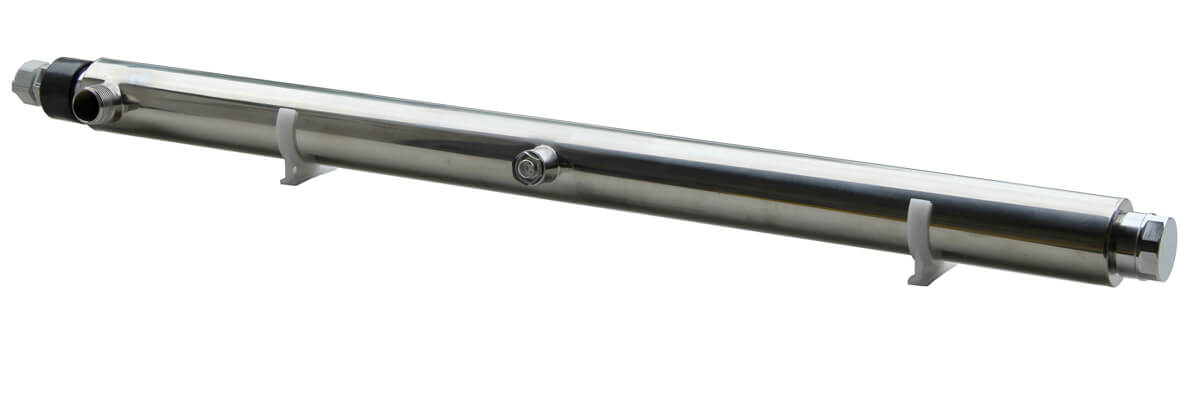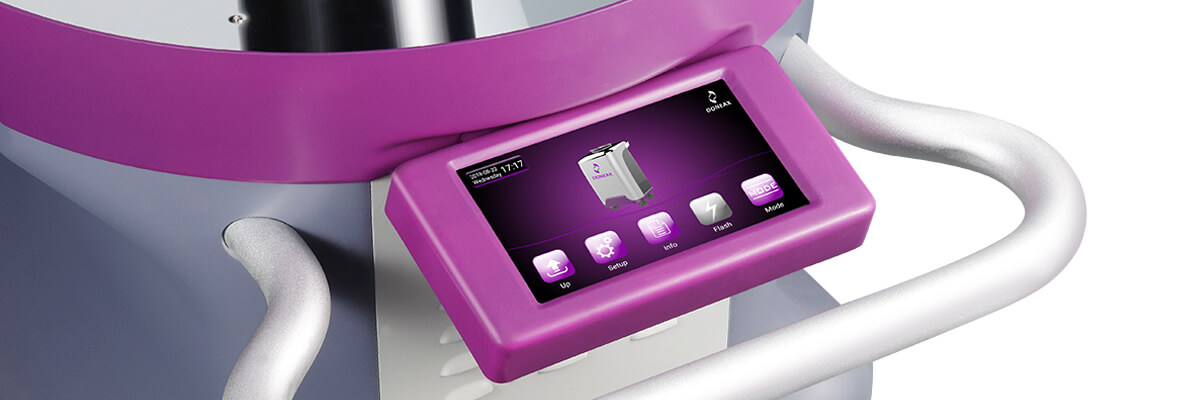Why Pulse UV Units Are The Best?
2021-01-11 by hqt
Today, epidemiologists, virologists, infectious disease specialists and Rospotrebnadzor specialists are increasingly talking about the beginning of the second wave of the COVID-19 pandemic. The threat of its spread is literally in the air again. We are all looking for ways to protect ourselves, our loved ones, colleagues, patients, clients.
One of these methods is the disinfection of air and surfaces in rooms using pulsed ultraviolet installations with xenon lamps. There are several methods, but today we would like to consider one of the most innovative and optimal ones - irradiation of premises with pulsed xenon UV installations. It helped us to understand all the advantages and nuances of their operation.
What is a pulse UV unit with xenon lamps?
To get acquainted with the installation in more detail, we suggest looking at a specific example - the mobile installation. It is made in the form of a compact monoblock 1 m high, equipped with four wheels and a handle for easy movement by one person. That is, it is not a bulky device, but a universal mobile device that can be used for sequential disinfection of a large number of rooms at once, even if there are numerous obstacles on the way of its movement: steps, sills, irregularities.
The Xenon flash lamp is located inside the housing to protect it from dust contamination and damage during transportation and storage. Before starting the installation, the lamp is automatically extended into the working position from the body using an electric lift. One of its advantages is ease of maintenance. Whereas conventional mercury lamps need to be regularly dust-free and disinfected, flash lamps create a powerful air blast that shakes off any dirt that settles on it.
In one session, it can simultaneously disinfects air and surfaces accessible to radiation at a distance of up to five meters (volume 300 m³) with an efficiency of 99.99%, and using several points of its sequential location, even large rooms can be effectively and quickly disinfected, including shadow areas inaccessible to direct pulsed UV irradiation.
What can a pulse UV unit protect?
Let's start with the fact that over the past DECADE there has been a tendency for an increase in the proportion of infectious diseases resistant to antimicrobial therapy and disinfectants. In simple terms, many bacteria and viruses have adapted to them, and it is becoming increasingly difficult to destroy them.
According to the WHO Global Antimicrobial Resistance Surveillance System (GLASS), about 500,000 people with infectious diseases in most countries are faced with this problem. According to the same organization, by 2050 this figure could grow to 10 million. According to expert estimates, about 300 billion rubles are annually spent in Russia on the prevention and control of infections associated with the provision of medical care (HAI). Therefore, one of the urgent tasks at present is the introduction, primarily in medical organizations, of effective technologies for the destruction of pathogenic hospital microorganisms, which can become a guarantee of population safety in the foreseeable future.
When using traditional ultraviolet installations with low-pressure mercury lamps, the active use of which for the purpose of disinfection began in the 30s of the last century, inactivation of microorganisms occurs due to the effect of UV radiation mainly on the genetic apparatus of a bacterial cell, causing mutations in the DNA molecule.
90% of such radiation is concentrated near the 254nm line, and its intensity has its limit (no more than 3 W per 1 cm of its length), even though these lamps are the most effective sources of bactericidal ultraviolet radiation - up to 35% of the electrical power consumption.
But this is their only advantage. Low radiation intensity and single-channel mechanism of action do not allow them to break through all levels of microorganism protection, especially spores of bacteria and fungi, as well as when surfaces are contaminated with biological material (blood, sputum, saliva, etc.). This leads to the appearance of microorganisms with increased resistance to UV radiation, moreover, capable of transmitting their acquired resistance during the reproduction process and retaining the original pathogenicity.
Pulsed UV installations of NPP Melitta are able to resist all types of microorganisms, including strains that are resistant to antibiotics and were allocated in 2017 by the World Health Organization in a separate list:
PRIORITY I (CRITICAL)
- Acinetobacter baumannii - resistant to carbapenems;
- Pseudomonas aeruginosa - resistant to kapbapenemam;
- Enterobacteria - resistant to carbapenems, BLRS producers.
PRIORITY II (TALL)
- Enterococcus faecium - vancomycine resistant;
- Staphylococcus aureus - methycilin-resistant, resistant and moderate resistant to vancomycin;
- Helicobacter pylori - resistant to claritromycin;
- Campylobacter spp. - Resistant to fluoroquinolones;
- Salmonellae - resistant to fluoroquinolone;
- Neisseria gonorrhoeae - resistant to cephalosporins and fluorquinolones.
PRIORITY III (AVERAGE)
- Streptococcus pneumoniae - resistant to penicillin;
- Haemophilus influenza - resistant to ampicillin;
- Shigella spp. - Resistant to fluorqinolone.
How pulse xenon works UV unituv unit
First, a little theory. Before starting the disinfection process using a pulsed xenon UV unit, you need to make sure that there are no people or animals left in the room, since their direct contact with pulsed ultraviolet light of this intensity is hazardous to health. That is why UV pulsed installations are equipped with a delayed start system, voice warning and remote controls. Thanks to this, the operator can pre-select the desired disinfection mode, then leave the room and start the device without risk to his health. In addition, the latest units are equipped with motion sensors. Thanks to them, the procedure automatically stops if a stranger enters the room during disinfection.
Why pulse xenon uv units - the best way disinfection of rooms
As we said earlier, many bacteria have developed resistance to antibiotics, UV light from mercury lamps and disinfectants. This means that a simple chemical treatment will not destroy the most dangerous microorganisms for the human body. Moreover, in the case of manual processing, there is a risk of a human factor: the disinfector can prepare a solution of a lower concentration, skip and not treat the surface area. The bacteria will stay there and continue to multiply, maintaining their pathogenicity and increasing the likelihood of infection. The use of aerosol generators requires preliminary sealing of the premises and a long processing time (3-4 hours), which increases the overall labor costs.
Open-type UV irradiators are usually divided into two types: with a low-pressure mercury (amalgam) lamp and with xenon flash lamps. Further, the numbers will tell us everything better.
Thanks to such technical characteristics and a fundamentally different mechanism of action, pulsed xenon lamps literally explode microorganisms at all levels of their structure, starting with DNA (the formation of intermolecular cross-links, loss of nitrogenous bases (for example, the detachment of thymine), photolysis of double bonds, single- and double-stranded breaks) and ending with visible damage to the biomembrane (violation of its integrity with subsequent leakage of the cytoplasm). Such a powerful blow to its structure cannot survive most of the bacteria and viruses known to man.
At the moment, this is one of the most effective and safe methods of disinfection of premises. After all, installations with flash xenon lamps do not contain mercury, minimize the adverse impact of the human factor, and the disinfection process itself takes a short period of time and has a high environmental friendliness due to the use of a safe inert xenon gas in the lamp.
Given the current circumstances, we can say that pulsed xenon installations will be relevant in almost all areas of activity. In the first place, of course, are medical centers, clinics and hospitals, especially those working with infectious patients and patients with COVID-19. High permeability, the presence of patients with an increased risk of infection can turn such hospitals into an infectious focus and incubator for their further spread between the premises and out of them. This endangers the health of not only patients, but also medical staff and visitors. It should be noted that pulsed UV units in hospitals are not know-how: worldwide practice has already proven their necessity for the provision of quality medical services.



